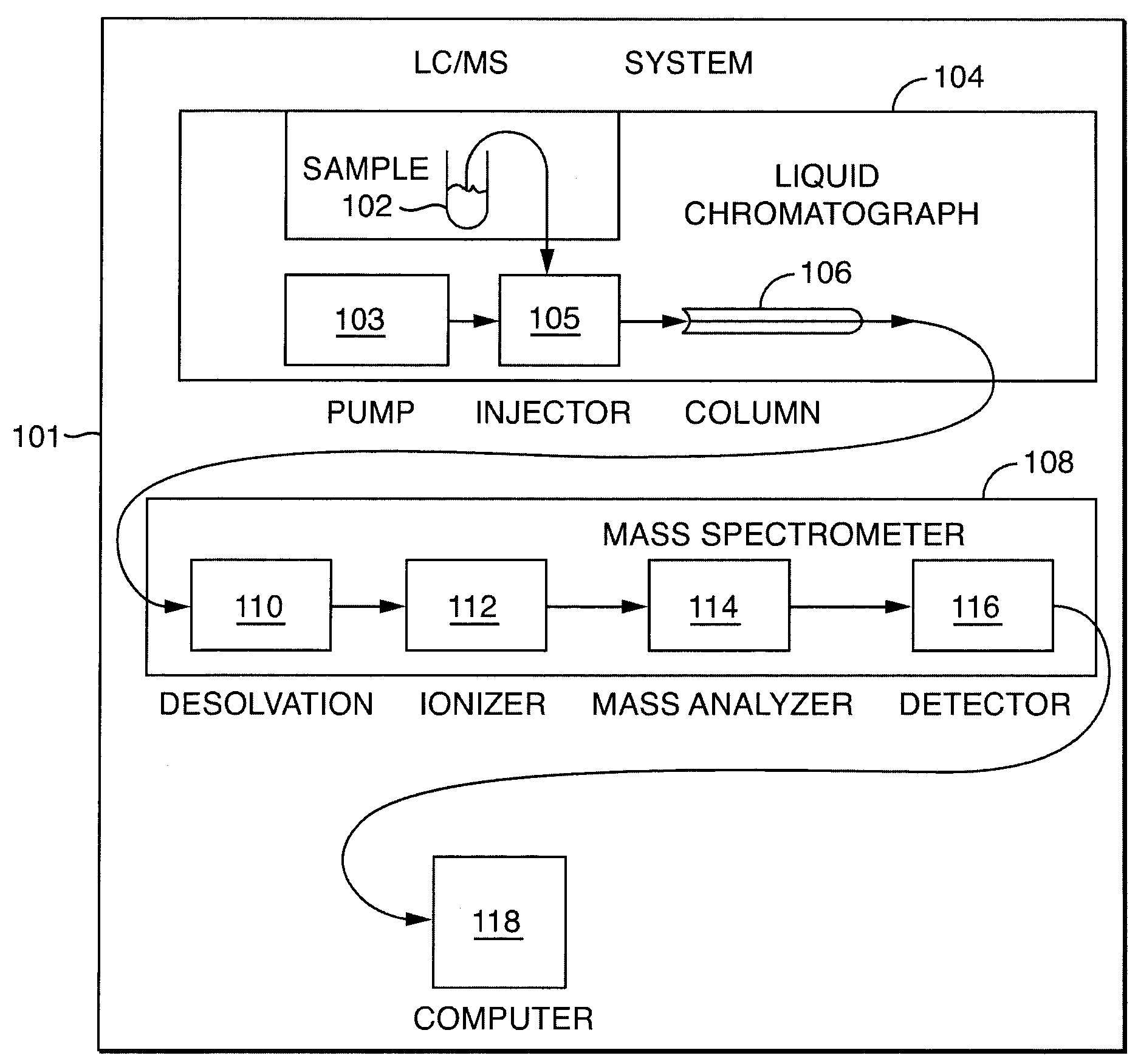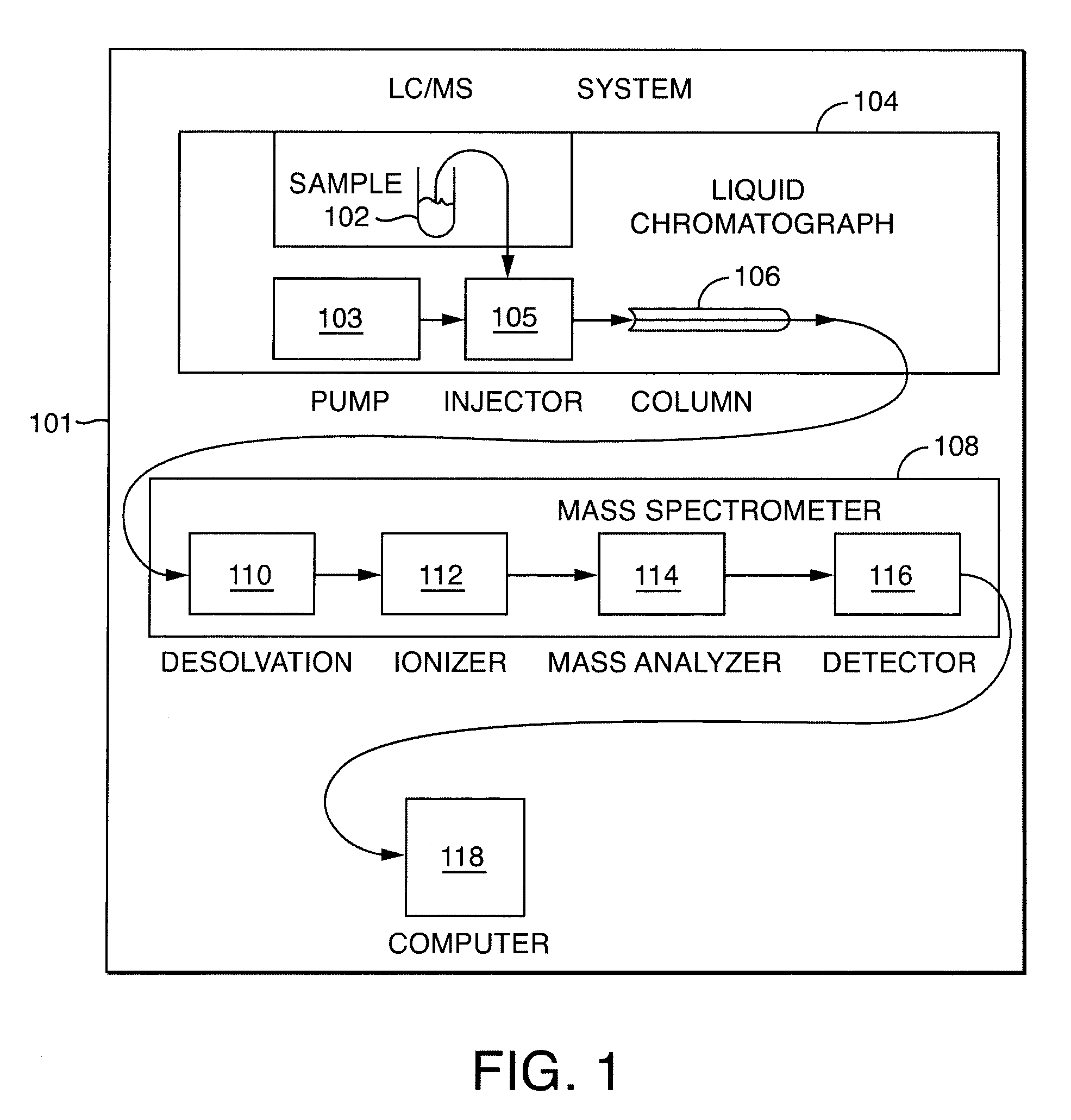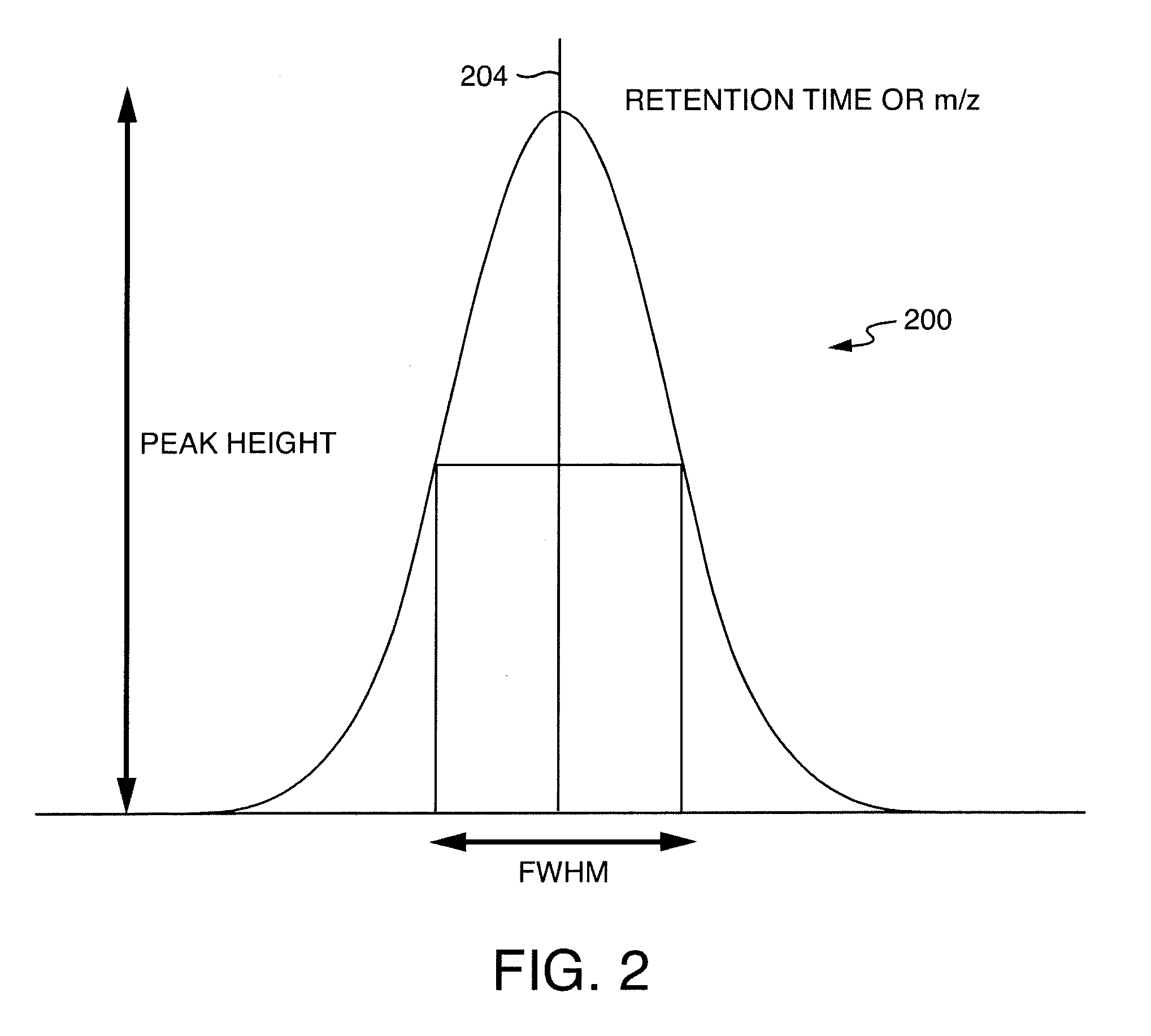Ion detection and parameter estimation for n-dimensional data
a parameter estimation and ion detection technology, applied in the field of compounds, can solve the problems of ion detection suffering from background noise and/or interfering background molecules, sample containing many molecular species may produce spectra that are too complex for interpretation or analysis using conventional mass spectrometers, and achieve the effect of reducing artifacts
- Summary
- Abstract
- Description
- Claims
- Application Information
AI Technical Summary
Benefits of technology
Problems solved by technology
Method used
Image
Examples
Embodiment Construction
Definitions
[0066]“Chromatography”—refers to equipment and / or methods used in the separation of chemical compounds. Chromatographic equipment typically moves fluids and / or ions under pressure and / or electrical and / or magnetic forces. The word “chromatogram,” depending on context, herein refers to data or a representation of data derived by chromatographic means. A chromatogram can include a set of data points, each of which is composed of two or more values; one of these values is often a chromatographic retention time value, and the remaining value(s) are typically associated with values of intensity or magnitude, which in turn correspond to quantities or concentrations of components of a sample.
[0067]The invention supports the generation and analysis of chromatographic data. Some embodiments of the invention involve instruments that include a single module that separates sample compounds while other embodiments involve multiple modules. For example, principles of the invention are ...
PUM
 Login to View More
Login to View More Abstract
Description
Claims
Application Information
 Login to View More
Login to View More - R&D
- Intellectual Property
- Life Sciences
- Materials
- Tech Scout
- Unparalleled Data Quality
- Higher Quality Content
- 60% Fewer Hallucinations
Browse by: Latest US Patents, China's latest patents, Technical Efficacy Thesaurus, Application Domain, Technology Topic, Popular Technical Reports.
© 2025 PatSnap. All rights reserved.Legal|Privacy policy|Modern Slavery Act Transparency Statement|Sitemap|About US| Contact US: help@patsnap.com



